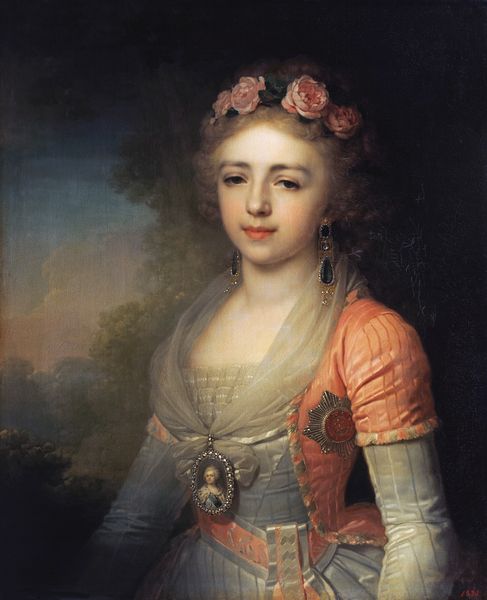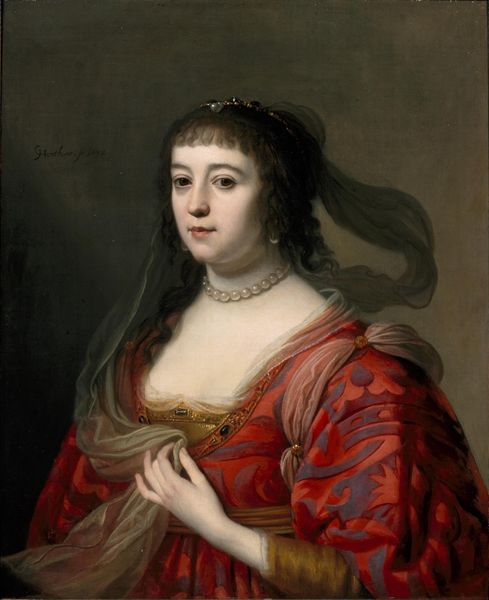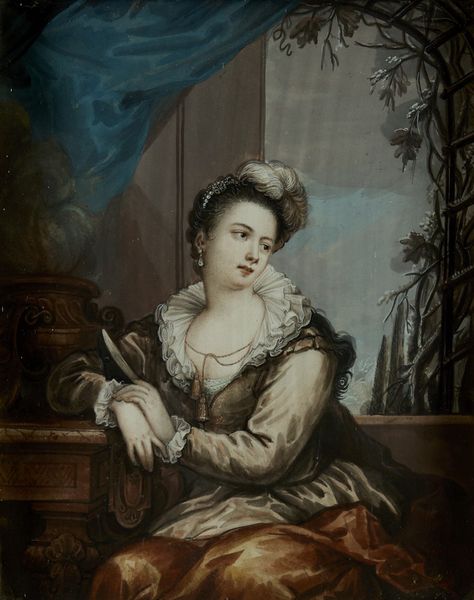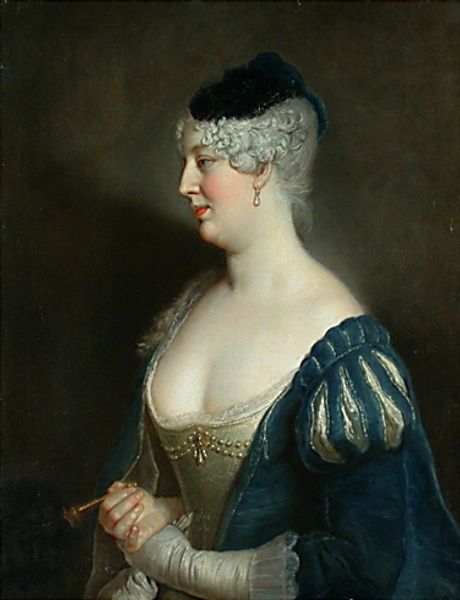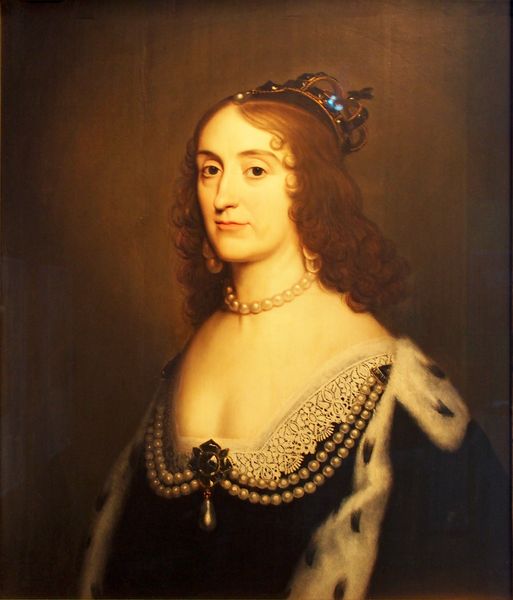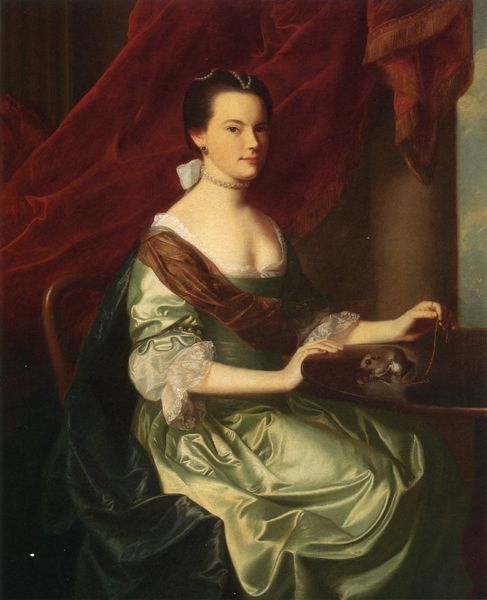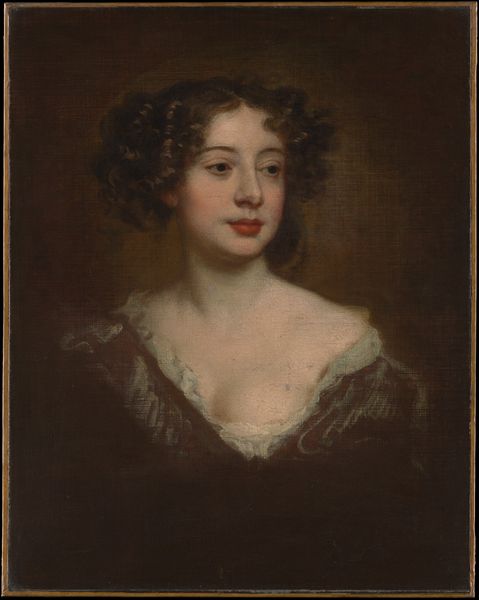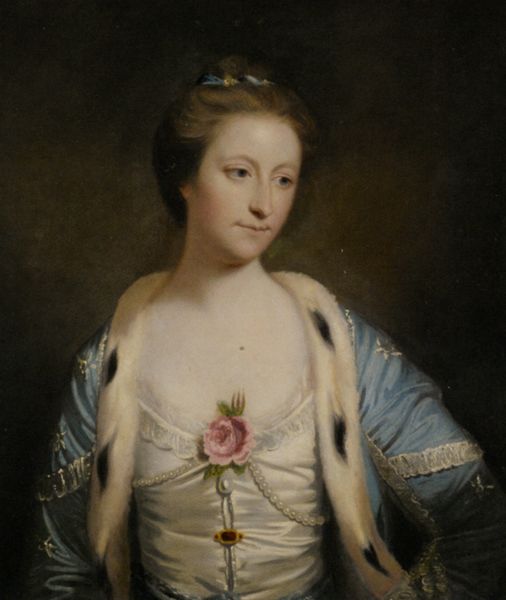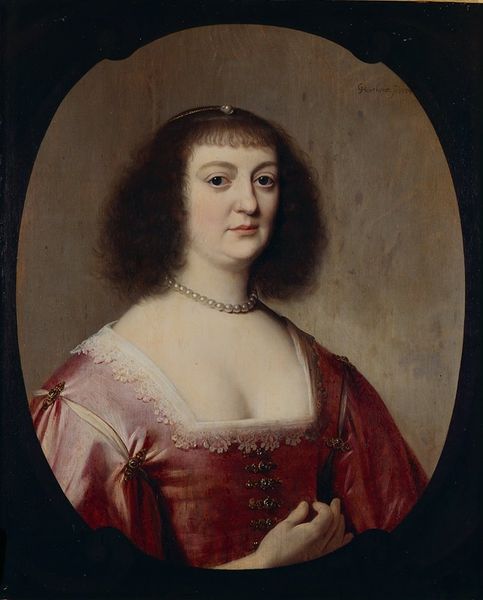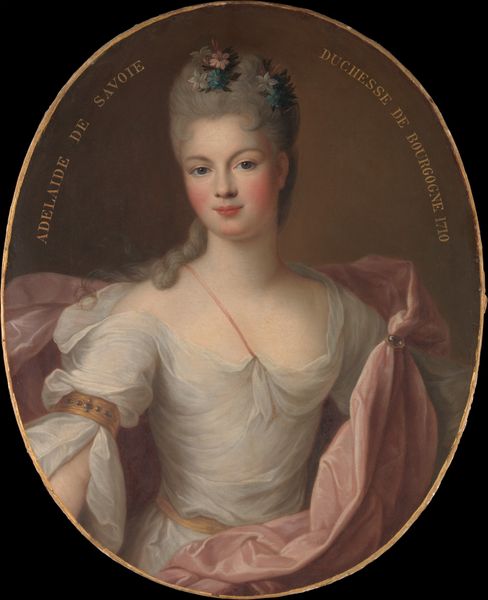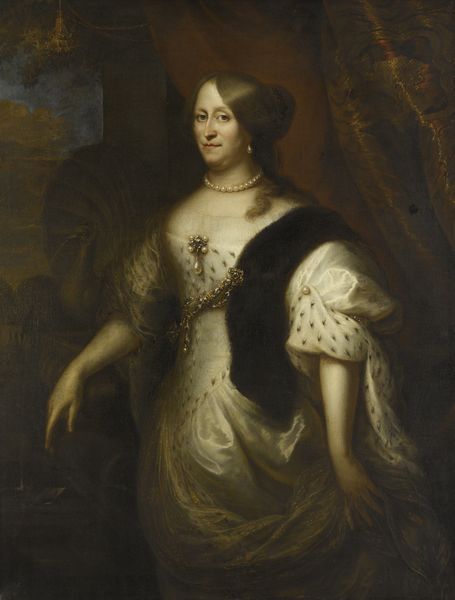
painting, oil-paint
#
portrait
#
baroque
#
painting
#
oil-paint
#
history-painting
#
academic-art
Copyright: Public domain
Editor: This is "Amalia van Solms," painted in 1632 by Gerard van Honthorst. It’s an oil painting, and the detail in her dress is just amazing. The whole painting seems designed to showcase her status, but what exactly was the role of portraiture at this time? Curator: An excellent question. In the 17th century, portraiture served to solidify power and status. Depicting Amalia van Solms, who was not only the Princess of Orange but also an influential figure in the Dutch court, allowed Honthorst to participate in shaping her public image. What message do you think this particular image conveyed about her position? Editor: I see elegance and refinement. It feels very controlled, but also romantic because of the soft lighting and her hair. How does it play into existing notions of feminity and power? Curator: The painting aligns her with contemporary ideals of female aristocracy: delicate beauty, piety, and dynastic continuity. The pearl jewelry, for instance, speaks not only of wealth, but also of purity and virtue. This kind of imagery cemented the legitimacy of the Dutch ruling class. Was it effective in promoting stability and projecting a particular social narrative? Editor: That's fascinating! So, beyond just being a pretty picture, it was actively participating in building and reinforcing a political image. I hadn't considered portraiture in such an active role before. Curator: Precisely. Consider also how displaying such works in specific locations - family residences, or even later in museums - further influences their meaning and access. It's about the active life of the image itself. Editor: I guess seeing her displayed like this reinforces her presence in a museum context and makes me feel like part of history. I appreciate your insights and perspectives! Curator: Likewise. Reflecting on how art influences its sociopolitical milieu gives us insight to this very day!
Comments
No comments
Be the first to comment and join the conversation on the ultimate creative platform.
